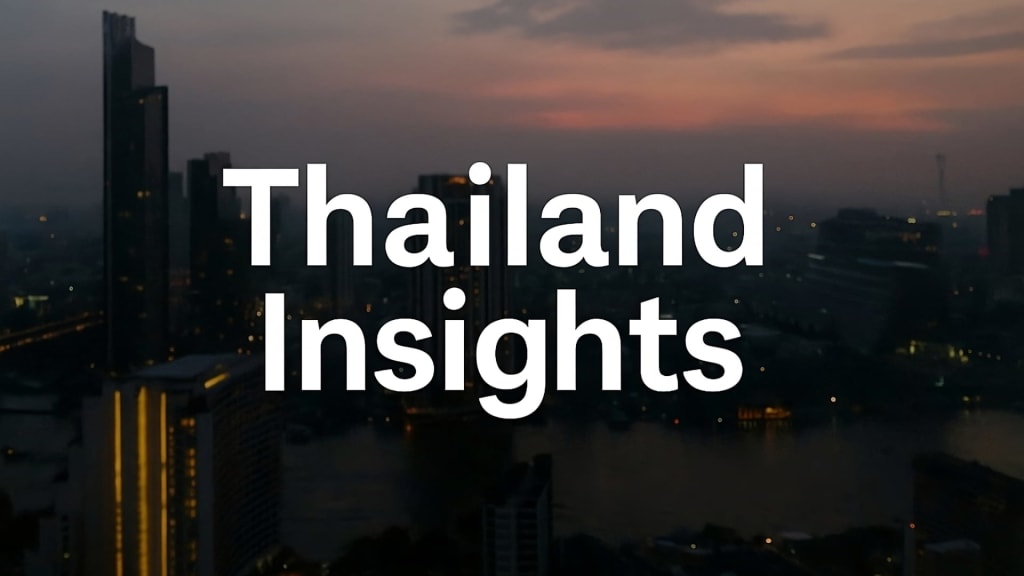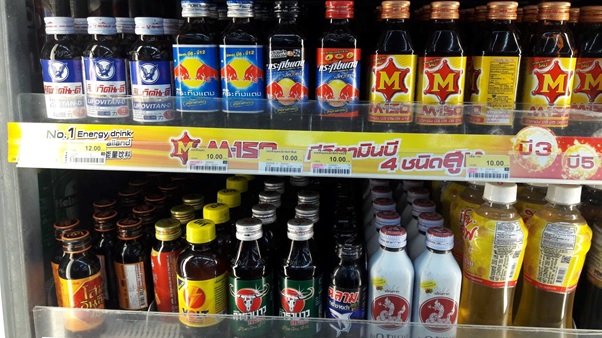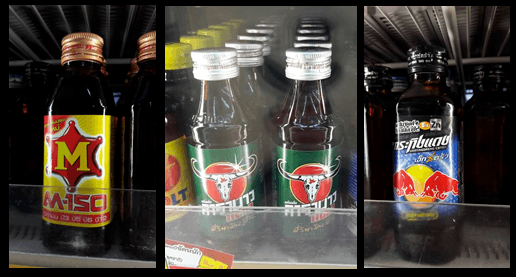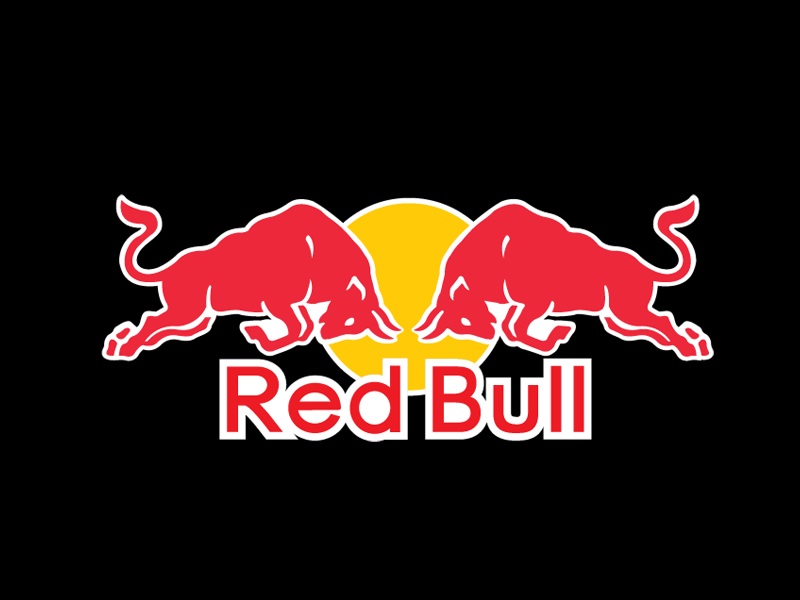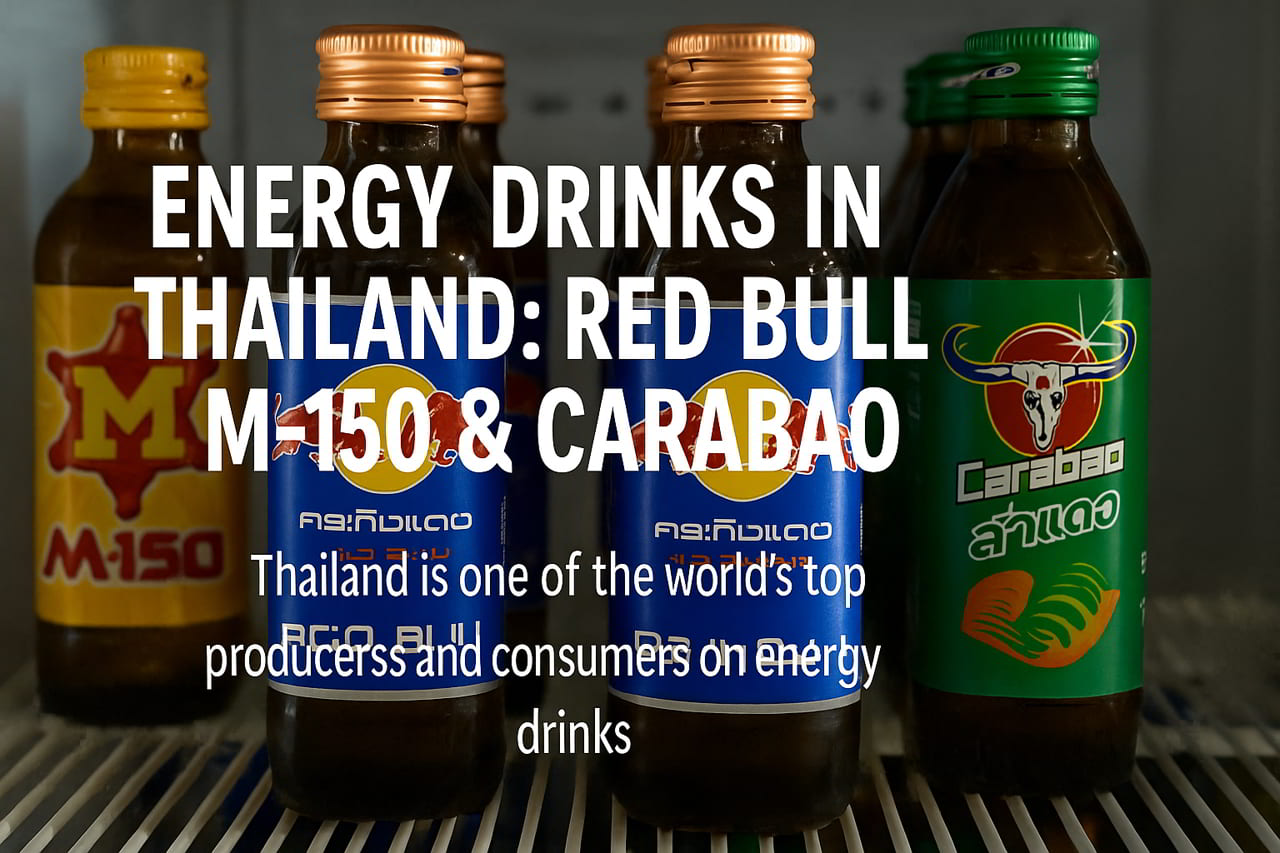
Energy Drinks in Thailand: Red Bull, M-150 & Carabao
Thailand is one of the world’s top consumers and exporters of energy drinks. Behind the flashy cans lies a powerful story of industry, identity, and influence.
Energy Drinks: A Global and Thai Obsession
While Red Bull dominates the global image of energy drinks, their origin isn’t Asian. The first recorded energy drink dates back to 1901 in Scotland, made by a company called Iron-Brew. It took decades before brands like Red Bull took over the international market.
Whether Iron-Brew or Red Bull, these beverages share one thing in common: caffeine. But not only that. They’re often packed with sugar, vitamins (especially B and C), and natural plant extracts such as ginseng (Panax), guarana, or ginkgo — added to give maximum energy and stimulate the nervous system.
An Everyday Booster in Thai Culture
In Thailand, energy drinks are a daily ritual for many working-class groups. Construction workers, farmers, nighttime workers, and university students frequently rely on them to keep going. Taxi drivers and long-haul truckers are also among the top consumers, often drinking them to reduce breaks and push through exhaustion.
Even though some claim they limit themselves to two bottles a day, the temptation to fuel a body that’s begging for rest remains high — especially in a country where rest is often sacrificed to productivity.
The Big Three: M-150, Carabao, and Red Bull (Krating Daeng)
Thailand’s energy drink market is dominated by three brands: M-150, Carabao, and the globally famous Red Bull (known locally as Krating Daeng).
- M-150: Recognizable by its yellow “M” on a red six-pointed star. Its image is centered on raw energy and masculinity.
- Carabao: Named after the Filipino word for “water buffalo”, this brand is intertwined with Thai rock culture. One of its co-founders is Yeunyong Opakul, a legendary Thai rock musician.
- Krating Daeng (Red Bull): Thailand’s oldest and most iconic energy drink, founded by Chaleo Yoovidhya. The logo with two red bulls symbolizes strength, endurance, and power.
Easy to Find — and Unregulated
Unlike in Europe, where medical professionals demanded lighter formulations, energy drinks in Thailand are widely available and largely unregulated. You can find them in convenience stores, supermarkets, and even roadside stalls. Prices range from 10 to 30 baht, making them affordable to all.
Health Warnings
Thai health authorities have issued limited advisories, mostly targeting children and pregnant women. The official recommendation is not to exceed two bottles per day — excessive consumption may lead to insomnia, headaches, and overstimulation.
✚ One More Insight: Exporting Thai Energy
Did you know that Thailand not only consumes but exports millions of liters of energy drinks annually?
While Red Bull is globally known, M-150 and Carabao are gaining ground in Southeast Asia, Latin America, and even Africa. Carabao, in particular, has positioned itself as a competitor on the international stage through sports sponsorships (notably football in the UK) and aggressive branding.
This expansion reflects Thailand’s soft power strategy — using cultural products to gain international visibility. The energy drink is no longer just a booster. It’s a symbol of modern Thailand: dynamic, hard-working, and increasingly global.
